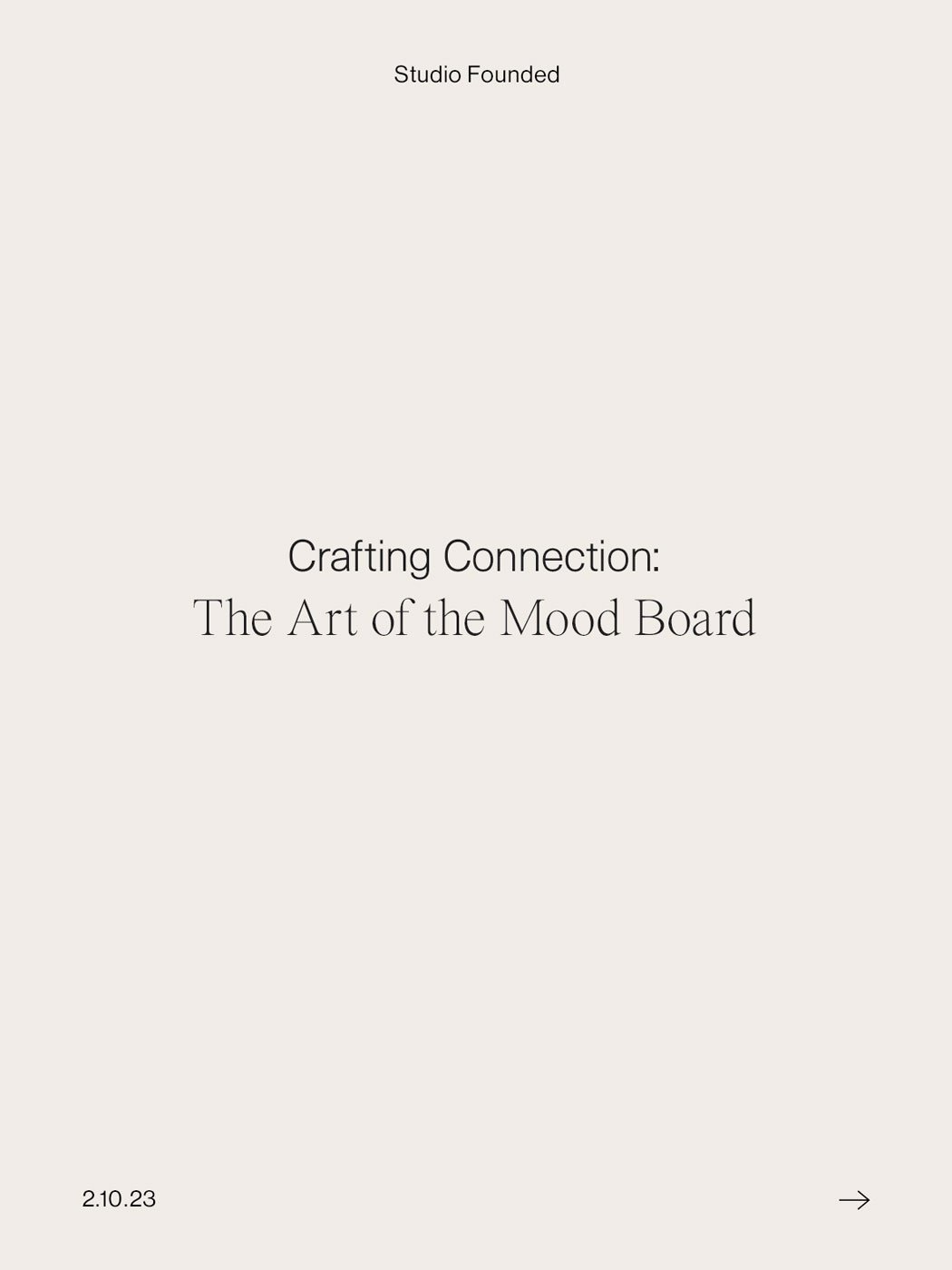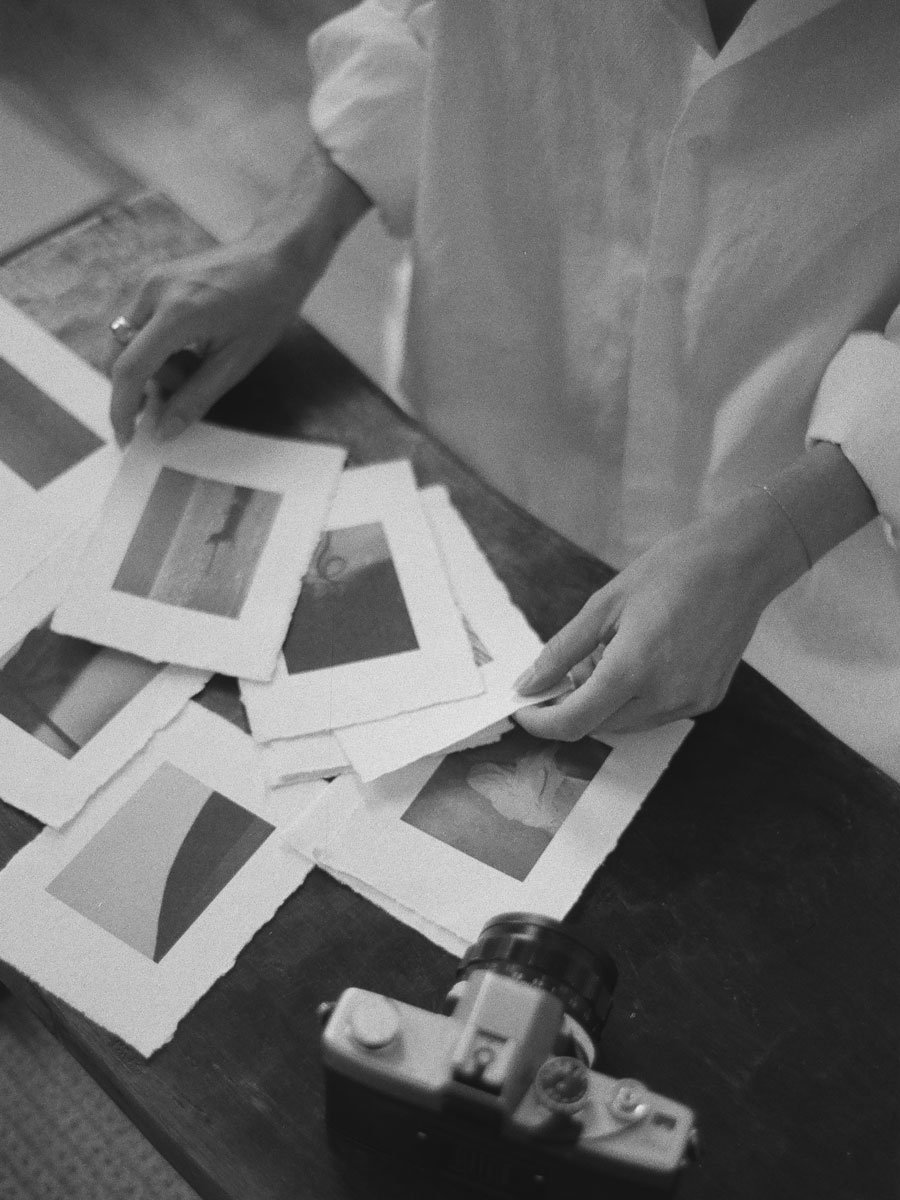Crafting Connection: The Art of the Mood Board
At the heart of every brand lies a unique essence that captures audience attention.
Defining and communicating your brand essence can be challenging, but a mood board is a tool that guides your vision and shapes a clear understanding of your offer.
In this post, we'll explore the art of the mood board and how to craft your own.
What is a mood board?
A mood board is a collection of visuals that encompass the way your brand feels and the message you want to convey to the world. It goes beyond the visual elements of your brand and captures the emotional qualities and values that make your brand unique.
Your mood board can consist of:
→ Images
→ Color palettes
→ Photographs
→ Typography
→ Textures
→ Anything that conveys a sense of your brand personality
When creating, keep your ideal audience in mind and think about how you want them to feel when experiencing your brand.
Why should you craft a mood board?
Your mood board will bring you:
→ Inspiration: A mood board will help you gather ideas across mediums. Use it to collect samples of design, imagery, and anything that gives a sense of your brand personality. You'll have a tangible representation of your vision that will help you to spark creativity and generate new ideas. When feeling stuck in the creative process, refer back to your mood board to reignite your inspiration.
→ Affirmation: Your mood board can also help you to affirm your brand's look, feel, values, and culture. Whether you're just starting or have an established brand, creating a mood board can support you in refining your brand’s personality. Put it in writing and make it tangible to help you communicate and refine your brand essence more effectively.
→ Articulation: A mood board provides a tangible method of sharing your thoughts and ideas with your team. It can also be helpful for communicating your vision with your designer, marketer, or employees so that they understand and work toward a shared vision. It can even be used to document the process of building your brand on social media, giving your customers and clients an authentic insight into your journey.
1. Define Your Audience
As you begin the process of crafting your mood board, it’s important to understand who your audience is and how to speak to them.
Before adding to your mood board, consider who it is for. What are your audience demographics? What inspires or motivates them? What type of lifestyles do they find aspirational? Which brands or people do they connect with?
If you haven’t defined your ideal audience yet, go here to read our blog post on crafting ideal audience personas.
2. Write Your Keywords
Choose a selection of keywords that form your brand personality.
If you sell natural skincare, your keywords might be holistic, ritualistic, mindful, trust, and inclusivity.
Pick 3-5 words that truly capture the essence of your brand. Selecting visual inspiration that fits or compliments these keywords will help to maintain a sense of personality throughout your mood board.
3. Put Ideas to Paper
Put all your ideas onto paper—either in a physical collage or by using an online tool.
Pinterest is a great option which you can use to build a single brand board or create a collection of boards for different aspects of your brand (for example, a board for typography and another for color palettes). Now is the moment to seek inspiration, be creative, and note down anything that reflects or evokes a sense of your brand.
A few things to consider are:
→ Color
→ Imagery
→ Textures
→ Typography
→ Words
→ Anything else that inspires you and evokes your brand, such as magazines, design samples, fashion, or interiors
Be intentional when choosing inspiration, keeping your values, audience, and brand story in mind.
What kind of images reflect these themes and values? Pay attention to the emotions that particular photos and details evoke, and choose a selection that match your brand's tone.
4. Refine Your Style
At this stage it is likely that you have gathered a large selection of inspiration, and it is time to trim it down into a cohesive visual style.
Start by going back through everything you have collected and trimming down your content—for example, by deleting any Pins that do not best reflect your brand. Ask yourself:
→ Does the image reflect the tone of your brand?
→ Does it share how you would like your brand visuals to look?
→ Does it appeal to the right audience?
→ Does it help to communicate your brand story or values?
When you are happy with your collection of 5-6 key images, add them to a refined mood board.
The refinement stage hones your collection into a cohesive visual style, ensuring that each element resonates with your brand's tone and communicates your story.
5. Actualize Your Vision
It is time to put your mood board to work. You can use it to:
→ Inspire the visual direction for new projects within your business—everything from brand photoshoots to product launches, new courses, or the design of your studio space.
→ Share your vision with others, whether it’s a consultant you’re working with, a member of your team, or your followers on social media.
→ Be a resource to refer back to when you are looking for inspiration, clarity, or affirmation.
Once refined, your mood board guides your crystal-clear understanding of your brand's identity that can you use when creating brand photoshoots, launching new products, or designing the ambiance of your studio space. Remember to share it with your key collaborators, whether it's a consultant, a team member, or your community on social media.
~
If you are looking for a beautiful mood board template, visit The Art of the Mood Board, a suite of templates sized for Instagram posts and stores, so you can engage your audience by sharing your brand mood. It completes complete with a Digital Guide and selection of guided prompts to help you craft your board.


